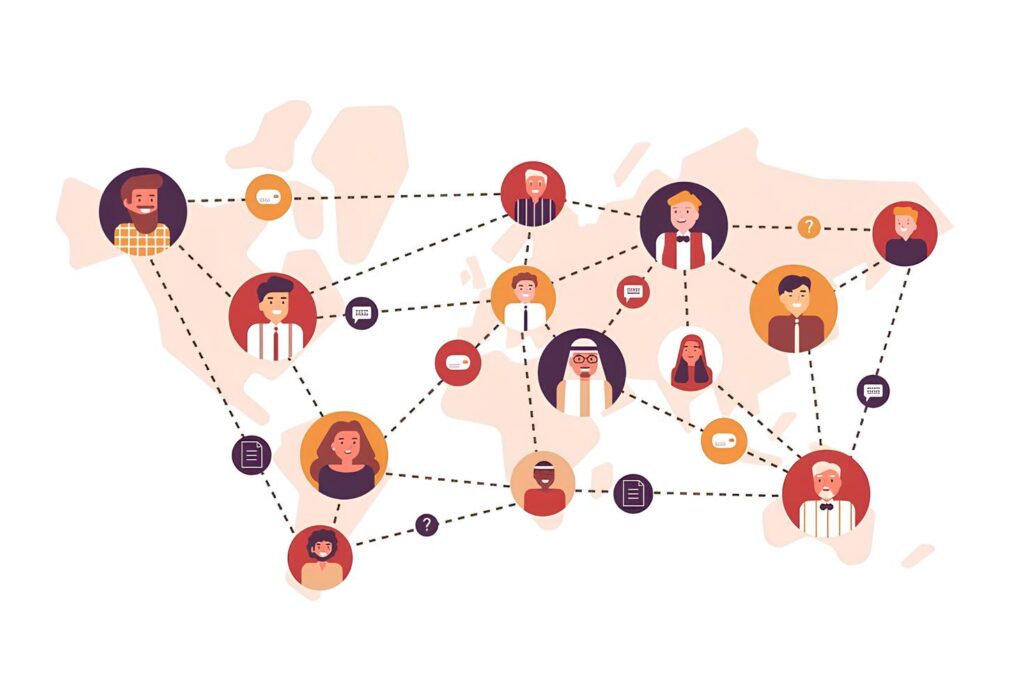Let’s not pretend: hiring in 2025 is brutal. The U.S. job market is tighter than ever, funding cycles are shorter, and your investors are expecting results yesterday. Hiring slow? Too expensive? You’re already late. So what are lean companies doing? They’re skipping the old hiring playbook entirely.

Companies used to brag about building strong internal HR teams. But in today’s climate, maintaining a full-time hiring staff is just… inefficient. Why carry payroll for recruiters when:
– You only hire in bursts? – You can plug into sourcing-as-a-service? – You have access to entire agencies that charge only when they deliver?
If you’re building an MVP with 10 engineers, you don’t need a recruiter. You need a solution. You need people in the seats, and you need them fast.
Why keep paying Silicon Valley rent when the proof is clear — talent performs just as well (and sticks around longer) from anywhere?
During COVID, remote hiring was survival. In 2025, it’s just how smart companies operate. FlexJobs’ 2024 report shows that remote roles are still up 35% over pre-2020 levels. The best talent isn’t down the street anymore — it’s global. And they’re ready to work, no relocation required.
You know who isn’t slowing down? Startups that hire from outside the U.S.:
– India still leads for affordable, scalable tech hires (Upwork 2023)
– Latin America is on the rise thanks to timezone overlap and lower costs (CodersLink 2023)
– Eastern Europe is winning thanks to stability, skills, and cultural fit.
And then there’s Europe.
Europe isn’t one country it’s a 40‑plus–nation talent buffet, and U.S. startups are already filling their plates:
– Massive STEM pipeline: Eurostat 2024 counts 4.7 million STEM graduates across the continent every year.
– English comes standard: The latest EF EPI ranks eight European countries in the global top 10 for English proficiency, so meetings stay in one language.
– Transparent, mature legal frameworks: EU‑wide directives on data and IP mean fewer contract surprises and solid worker protections.
– Competitive rates: From the Baltics to the Balkans, senior engineers often cost 30–50 % less than their coastal‑U.S. peers — without compromising quality.
| Role | Europe Median TC* | Coastal U.S. (Datadog / market) | Cost Advantage |
| Senior Software Engineer | $ 98 K (≈ € 90 K) | $ 370 K | ‑73 % |
| Data Scientist | $ 59 K (≈ € 53 K) | $ 187 K | ‑68 % |
| Product Manager | $ 78 K (≈ € 70 K) | $ 303 K | ‑74 % |
| Product Designer | $ 85 K (≈ € 77 K) | $ 216 K | ‑61 % |
| QA Engineer | $ 80 K (≈ € 73 K) | $ 140 K | ‑43 % |
* Median Total Compensation = base salary + bonus + equity.
Source: Levels.fyi, May 2025 (European medians drawn from Germany/France datasets; U.S. medians from Datadog or overall coastal‑U.S. market).
AI Is Eating HR — But That’s Not Always Good
Let’s be honest: most candidates today aren’t talking to humans. First contact is often with an algorithm. From resume scoring to AI interviews, recruiters are being replaced by scripts. Stanford’s HAI Institute warned in this 2022 briefing that while AI improves speed, it often filters out excellent candidates for arbitrary reasons.
That’s where real recruiters still matter. The best hires aren’t the ones who game the system — they’re the ones with grit, creativity, and the ability to ship. And that doesn’t always show up on AI metrics.
If you’re a U.S. founder trying to:
✓ Ship fast
✓ Reduce hiring costs
✓ Avoid visa headaches
✓ Get real output from day one
Then start hiring abroad. Start hiring smarter. And maybe, just maybe, start in Europe.
We’re already helping U.S. companies do this every day.

